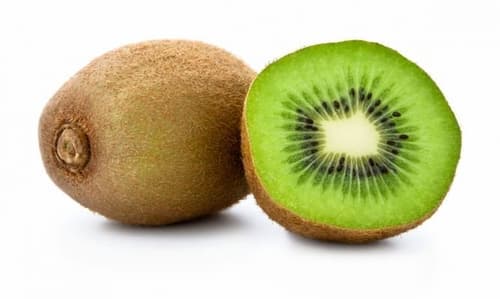
Kiwi loose
1 pcDelivery to your door
AI Summary
We source locally for the freshest groceries you can trust.
- Description
- Composition
- Similar products
- More from this brand
- Recipes
The shrub-like kiwi plant is metres long and grown on scaffolding or poles. Almost 70 kg of fruit hang from the plant in bunches; the more, the smaller the individual fruit. The elongated-oval kiwi with the rusty-brown, furry-haired skin is about 5-8 cm long, about 5 cm in diameter and 65 to 100 g in weight. The flesh is grass-green with a white centre and many small, blackish seeds. The delicious taste of the kiwi is often described as a mixture of gooseberries, melon and strawberries.
.Origin
The home of the kiwi is the high altitude forest areas of China and Taiwan. Today, it is mainly cultivated in New Zealand. This is where it got its name, derived from the national and heraldic animal of Australia, the cute, wingless forest bird kiwi kiwi, which lives in holes in the ground. In addition to New Zealand, it is also grown in Australia, California, South Africa, South America and the Mediterranean countries. Kiwis have had a unique career. The juicy fruits, which are hardly considered exotic in Germany, the world's largest sales market, are available all year round.
.Tips
When buying kiwis, make sure they are not too soft or too hard. Medium-hard fruits have an optimal degree of ripeness and the full aroma. Kiwis can be kept for a few days in the refrigerator.
Preparation of kiwis is recommended.
Preparation As a fresh fruit, kiwis are best enjoyed well chilled. To do this, cut them crosswise and spoon them out; they can also be peeled and served sliced. The fine seeds are eaten as well. You can refine the already delicate taste of the kiwi with lemon or orange juice, vanilla sauce, raspberry brandy, brandy or whipped cream. Kiwis are also recommended as an appetising garnish for sweet dishes, salads, cheese platters, etc.
